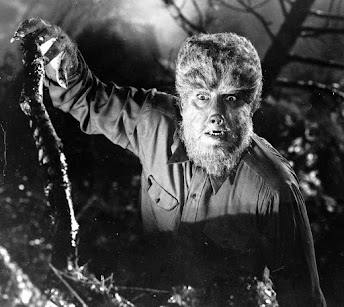The Origins of The Werewolf: Lycanthropy and Its Historical Past
What it means to be a lycanthrope
In order to understand the werewolf and to delve deeper into its origins, we must first understand its components and what it really means to be a werewolf. The term Lycanthropy derives from two greek words, lykos which means wolf and anthropos which means man.
 |
| Werewolf Attack woodcut. By Lucas Cranach (1512) |
The "Laws" of a Werewolf
A werewolf is an individual (a living person) who turns into a massive wolf, typically during the nighttime, and devours anything from animals, people, and even corpses. These werewolves will turn back into their human form once sunlight begins to arise. There are also different variations of werewolves; some can turn into their animal form at will and some are forced to turn during a full moon. We can see these variations of transformation in countless pop-culture pieces.
We then ask: Well, how does one become a werewolf? There are two most common methods.
Method #1: Hereditary
Becoming a werewolf can be hereditary, which of course means that you have had no choice in this lifestyle and are automatically born into it. This is also known as "Genetic Lycanthropy." Both parents must posses the werewolf gene in order for this method to be successful. The child born with werewolf genes though will not automatically assume werewolf form during full moons or at-will transformation, this will likely occur during the late stages of puberty. Individuals with the werewolf gene may or may not be aware that they contain it. Parents can have the werewolf gene without ever actually having physically transformed into a werewolf. Thus, if the child contains this gene, it might come at an extreme shock when the time does come and they're faced with this horrific transformation.
 |
| Transformation from 1981 film The Howling |
Method #2: The Bite
This second method is the most classic method and the most commonly used in film, books, tv, etc. This method consists of being bitten by a werewolf while, of course, in their werewolf form typically during a full moon. The victim must survive the attack in order for this to be successful. It is a slow process for the bitten individual to actually become fully infected, it is not something that occurs overnight as the bacteria must spread throughout the whole body. This slow process is painful and can have many symptoms such as nausea, insomnia, fevers, and flu-like symptoms. Once the bacteria from the bite has fully spread, the individual will transform every full-moon from then on.
Earliest Recording of the Werewolf
 |
| Ancient Greek engraving, "King Lycaon is punished for his misdeeds by being turned into a wolf" |
The Story of King Lycaon The First Werewolf
Modern Day Werewolves
Supplemental Documentary: Why Humans Love to Create/Fear Monsters and What Werewolves Mean to Us
Sources
· https://theconversation.com/the-ancient-origins-of-werewolves-104775
· https://www.britannica.com/art/werewolf
· https://www.gods-and-monsters.com/ways-to-become-a-werewolf.html
· https://sites.psu.edu/siowfa16/2016/09/10/modern-day-werewolves/
· https://www.youtube.com/watch?v=JP7hT9IrPsQ&t=81s


Comments
Post a Comment